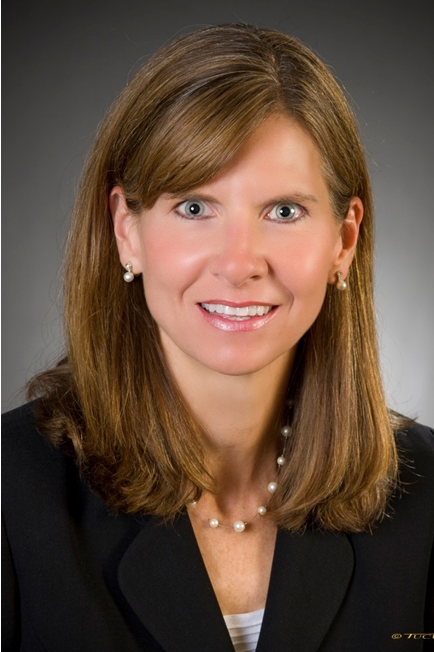Shooting for the Stars
Industry Update
February 20, 2017
These days, the focus on mortgage technology seems to be on the purchase side of the business. And why not? The Mortgage Bankers Association is predicting a steady increase in new mortgage originations in 2017 and 2018. And with an increase in originations, everyone seems to be focused on faster loan closings, online borrower portals, and “rocket” mortgages that compare buying a house to travel at supersonic speeds.
But as purchase volumes increase, so will servicing volume. And in a post-2008 world, servicing mortgage loans has become more than simply a function of paying taxes and escrows. In fact, the servicing sector has experienced many new business challenges—challenges that involve everything from new regulations and data security to how consumers behave online and how they expect to be treated. The challenges impact all parties to the servicing environment—lenders, borrowers, investors, and third parties.
To be sure, the key to solving these challenges from a technology standpoint is infrastructure, or the frame upon which everything is built. Building this infrastructure involves taking four critical steps. They may not seem as glamorous as a ride in a rocket, but servicers that master them can be sure to manage loans with optimal efficiency from takeoff to payoff.
Security as a Stepping Stone
Make no bones about it—security is the most important thing for servicing infrastructure. Borrower and investor information is sacred to the mortgage servicer, and the technology to keep that information secure is just as important, if not more, than the accuracy in reporting it. After all, if the mortgage industry can’t guarantee that a customer’s financial information is safe, it really doesn’t matter how great the origination went.
But security is vastly different than it was 10 years ago, when many companies housed large servers on site. Instead, there are service providers that provide a cloud-based infrastructure that is scalable based on business needs. Security needs to be a key aspect of this cloud-based infrastructure.
In any business, security protects the core infrastructure—that is, the hardware, software, networking, and facilities that are running services. A servicer’s core infrastructure must provide the flexibility to launch new products or services efficiently in a way that protects data. As a result, the infrastructure becomes a fluid asset, just as information going in and out of mortgage servicing systems is a fluid asset.
Using software and hardware to configure managed services, such as desktop environments, will provide the best security practices and IT security standards, preventing the cyber-hacker from gaining access to valuable data.
Security, however, is more than simply tying together hardware and software. As mortgage servicing volume increases and decreases, the mortgage servicer must grow, shrink, and adapt its consumption of services. Growth means higher demands for security both inside and outside of the cyber world. Likewise, reduced demand from loss mitigation, short sales, and loan resolutions demands a flexible infrastructure that lowers costs but maintains the same level of security necessary for current loan volume.
Empowering the Buyer
The 21st century mortgage servicer must aspire to be the Uber or iPhone of servicing. Giving borrowers and investors the wherewithal to get what they want at their own preference and convenience has to be the “new normal” in mortgage servicing.
Just as Quicken’s rocket mortgage product set new standards for how consumers experience getting a mortgage, mortgage servicers need to expedite the servicing process by putting borrower and investor convenience at the forefront—all while maintaining security of the borrower’s information.
One thing the mortgage industry has learned from the ongoing changes in the regulatory environment and consumer behavior is that consumers demand and expect a simpler method of maneuvering through the “wall” that stands in the way of gathering and accessing their own information.
As an industry, we need to make the process smoother for consumers and investors as they navigate through websites and phone systems. It means that we use security as a means for borrowers and investors to unlock a more transparent process. With a secure ID and password, borrowers, investors, and servicers should be able to enter a single website and obtain the specific data they need and are entitled to at their own convenience.
The overriding idea behind enhanced customer convenience in the servicing space is to enable borrowers—as well as investor clients—to do as much of the work themselves as they can without having to call the mortgage servicer. Borrowers, for example, should be able to view all their documents online. If servicers don’t already have an online portal, then they need to create one that lets borrowers gain instant access to all documents. This expedites the mortgage servicing process by allowing clients to self-service their own needs at their own convenience while decreasing demands on call centers.
Likewise, servicers should be able to give their borrowers the option of going paperless, instead receiving notifications in real-time via text message or email. This not only makes it more convenient for borrowers, but it’s also more cost-effective for the servicer in that it eliminates the need for printing paper documents and buying postage, not to mention the time savings involved.
In the same way, loan investors should be able to access all the information about the loans they own, wherever they want, whenever they want. That includes real-time loan performance data within their investor portals, including proprietary loan analytics, decision-making technology, and life-of-loan management. For all these reasons, it’s important for mortgage servicers to build infrastructure that does not limit but instead enables each of these capabilities.
Tech with a Touch
For various reasons, many borrowers and investors avoid self-service portals. Some people simply want to call a phone number and hear a human voice rather than remember an ID and password for every entrance into a website. Others are looking for answers they can’t find on a website or have a question on data not available in an FAQ section. Most of the time, not every conceivable question a borrower or investor client may have is answerable in an online portal.
A servicer’s infrastructure must leverage technology with human contact to solve this issue. That means making further improvements in customer service menus and adding a live chat function for those willing to stay online. Again, the main idea is to reduce the number of calls to your call centers.
For borrowers and investors who still need to hear that human voice, providing a specific point-of-contact for each borrower or investor client is crucial in today’s market. Customers should be able to discuss their issues with their dedicated loan service representative via chat, email, or telephone.
We talk about mortgage origination as a “relationship business,” but mortgage servicing also demands a relationship between the servicer, the borrower, and the investor. Making those relationships work requires dedicated service to meet the needs of the client, just as is the case in any profession. In today’s world, it also requires the speed, accuracy, and flexibility to project the greatest efficiency possible for customers so they keep coming back. The bottom line is that a servicer’s infrastructure must be built from the ground up with customer service in mind.
Rolling with the Punches
If there is one thing that is constant in our industry, it is continuous change—both regulatory change and changes in borrower and investor needs. A servicer’s infrastructure therefore needs to be agile, functional, and scalable in order to accommodate these changes.
A servicer’s work is based on customer demands, whether they’re growing or shrinking. The flexible infrastructure that today’s technology provides allows them to adjust to new regulatory restrictions more easily. Similarly, it provides servicers with the capabilities to launch new products or services more efficiently, under the umbrella of new or refined rules and regulations. Indeed, a mortgage servicer’s infrastructure should be a fluid asset, not a rigid system that can’t easily be altered to meet changing needs. Mortgage servicers must rely on them to fit into any new compliance regime, because what is true today may not be so tomorrow.
Reaching New Heights
No matter what industry they are in, a business that has solid security, stronger compliance, a high-quality customer experience, and excellent customer service will see the results on the bottom line. Mortgage servicers are no different. As long as they approach their technology infrastructure with these four critical steps in mind, there’s no reason why mortgage servicers cannot become the “rocket servicers” of 2017 and beyond.
Source: DS News





